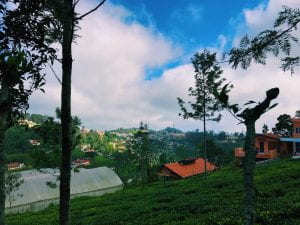By Zoe Barr
In class earlier this morning, we had been told that Rifle Range was a wetland that provided a number of communities with their drinking water, but while looking at the site that I saw, I found that hard to believe. My attention was immediately brought to the mounds of garbage creeping towards the small waterway, with each household encroached about the wetland expelling its own stream of plastics and rotting food into the valley sheltering what was left of the riparian habitat. A community toilet was stationed near a well that a woman was collecting water from, which I was later told had an unsealed septic system and had likely not been maintained in years. I had to step off the dirt roadway multiple times in the half hour that we were at the site to allow for vehicles to pass by, leaving me wondering just how much oil and gas was making its way into the water that the same people that drove those cars depended on.

At one point in time, the Nilgiris had wetlands in nearly every mountain valley, with grasslands and shola forests comprising the rest of the landscape. With the rise of British colonialism, these unique landscapes rapidly were replaced with eucalyptus and wattle plantations, and wetlands that once lie at the feet of the hills were drained and converted to agricultural fields. Today, the valleys that were once lush marshes are now the homes of countless tea plantations- a legacy that remains from the time of imperialism.
When these ecosystems were destroyed, wetlands were largely perceived as wastelands- a breeding ground for disease, teaming with mosquitoes, and lacking the capacity to be economically productive. Because people did not recognize the benefits and vital ecosystem services that were provided to them via these riparian habitats, and oftentimes still don’t, they are often either utilized as dumps or are filled so the land can be used for some other “beneficial” development project.
The image that was painted in front of me at Rifle Range made it abundantly clear that there was a misunderstanding. It is too often that man and nature are perceived as separate things, no matter how inherently interconnected they are. The landscape that humanity perceives itself as superior to is the same landscape that provides the water and food that is necessary to live. This refusal to acknowledge the mutualistic relationship is what turned this once vibrant wetland into a “wasteland.”

